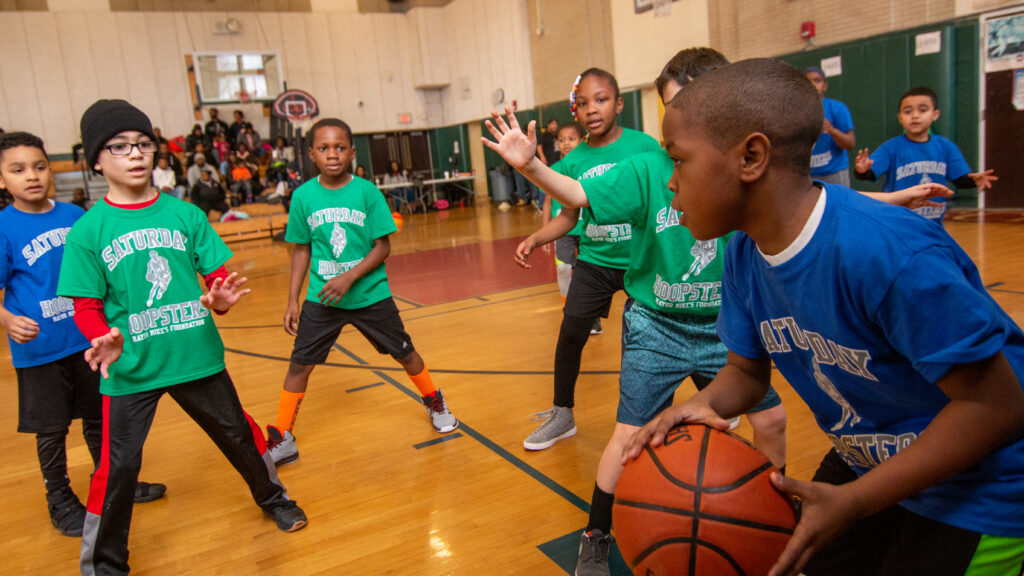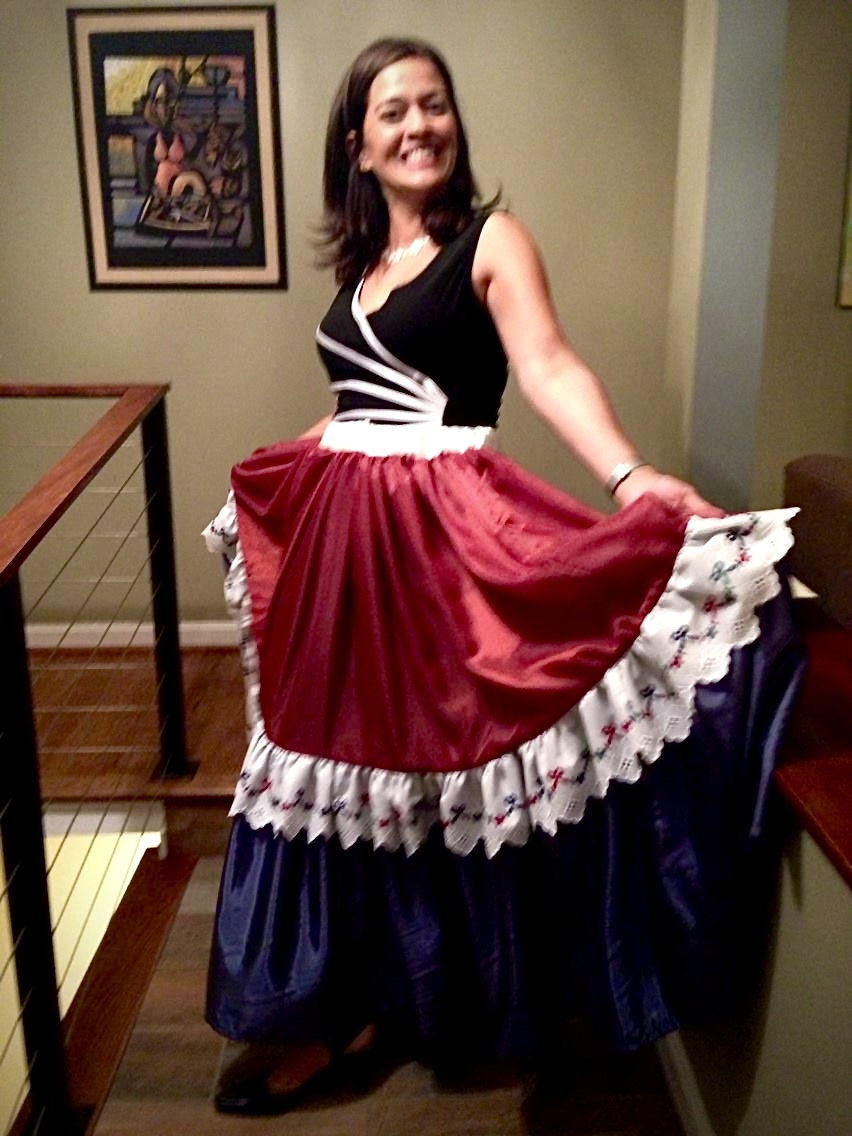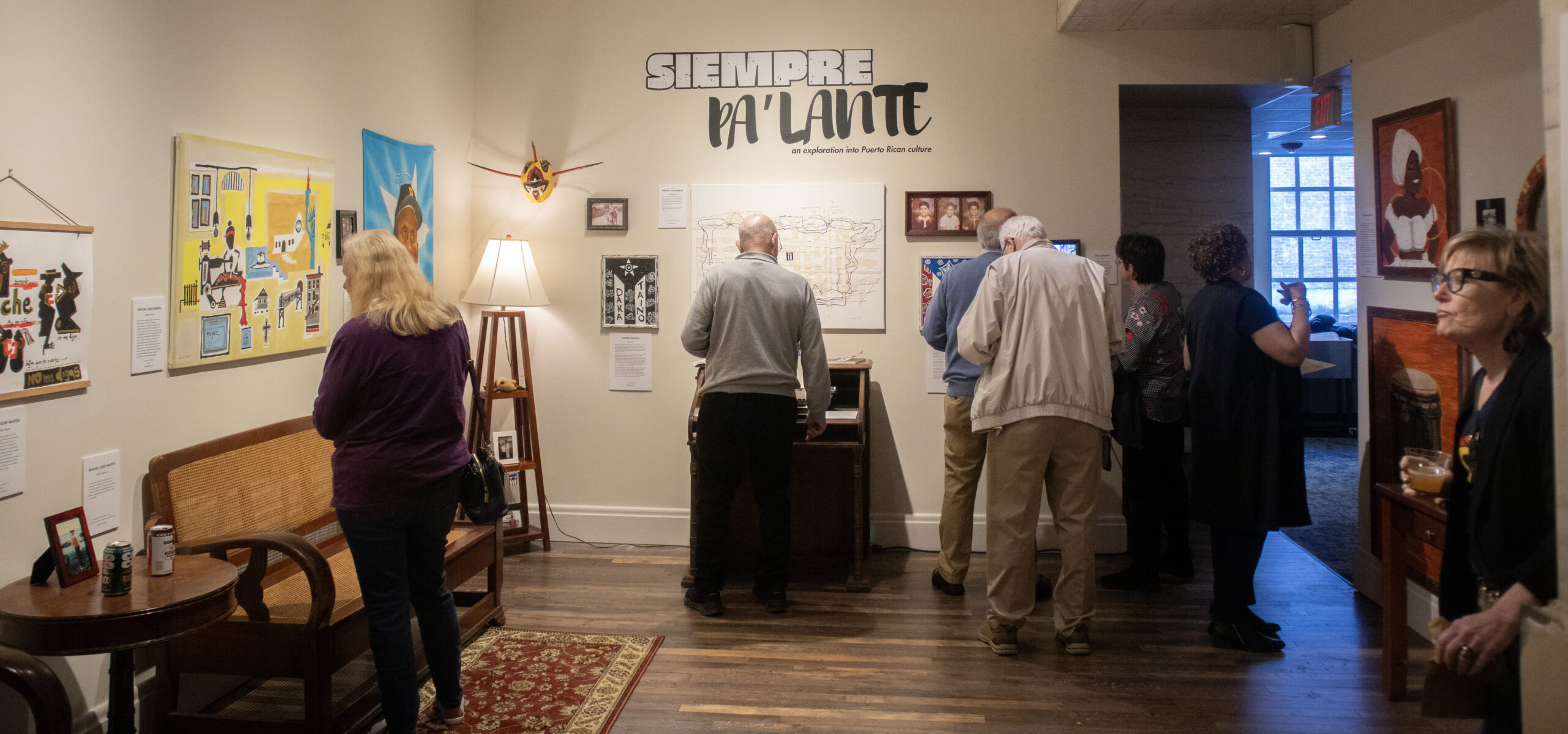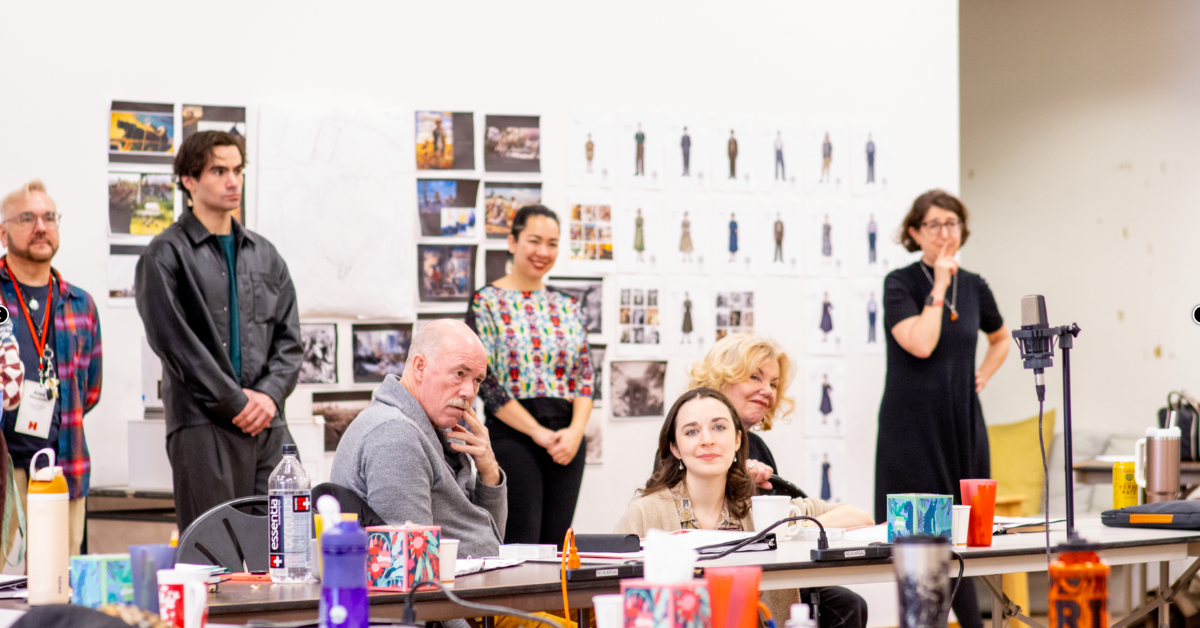CT Latino News’ series—Hartford Children’s Health: Equitable Access—explores responses to complex systemic and cultural barriers across Connecticut’s capital that impact the daily health of its youngest residents. About 28,000 children and youth live in Hartford, one of the state’s most diverse communities that continues to address a variety of longstanding health-related disparities.
HARTFORD—When Active City Hartford Founder and Physical Education Teacher Brian Gallagher first stepped in to organize Saturday Hoopsters—an informal basketball group in Hartford—with his childhood friend Ben Cruse years ago, about 150 children came to play. The next year, that number doubled to 250.
“We’re like, ‘Oh, we need to really think about this and think about what we’re doing,’” Gallagher said. “So, we decided to look at making this a real nonprofit, and that’s how we came up with the idea with Active City, where we run these two programs—Hartford Soccer and Hoopsters—but then we help other groups.”
Founded in 2014, Active City Hartford looked to create a supportive network of accessible youth fitness opportunities. Now, a coalition of 44 local community organizations and programs, that network has rapidly grown since then. About 5,000 children and youth are registered in the nonprofit’s programs this year, compared to Active City’s first year when 400 kids were registered.
Many things can make getting regular exercise difficult for young residents. In a survey conducted by CT Latino News, families across Hartford County reported a lack of sense of public safety, busy school and work schedules, cold weather conditions, and a lack of interest, along with transportation and cost issues, as common barriers to daily physical activity.
The nonprofit works with local schools and the City of Hartford to collectively offer a wide variety of free, schedule-fitting, reachable programs across the capital’s neighborhoods. Despite public efforts, there are still a few limitations with school and city exercise programs, including limited options in activities and being offered at selective times and locations.
The capital’s infrastructure is another barrier that can prevent residents from exercising as often as they would like, shared Dr. Melissa Santos, Clinical Director of Connecticut Children’s Pediatric Obesity Center.
“Where do your kids play?” asked Santos, echoing patients’ difficulties with getting regular exercise. “Do you have a built environment that allows for parks and green space? Or are you in a multi-family house where your kid can’t run or jump because you’re going to disturb the neighbors?”
Children and youth experienced a great increase in stress and a significant loss of physical activity when schools closed during the COVID-19 pandemic. Learning, socialization, and downtime quickly relocated to be online—meaning that residents rarely went outside.
In an effort to support children’s fitness, the City of Hartford signed a three-year contract with Active City in 2020—that ends July 2024—to provide the coalition with $300,000 of American Rescue Plan funds to run accessible recreational programs year-round. The funding has allowed Active City to offer winter programming, which has been more expensive than other seasons due to gym-related costs.
“Four years ago, with COVID, the city was trying to get kids to come out and play more sports outside and get more physically active, so they asked me to put together a proposal to kind of oversee and run sports in Hartford,” Gallagher explained.
This winter, Active City will be renting ten to 12 gyms to offer about 25 programs ranging from kickball to basketball to double dutch. Registration for its winter programs will open in the coming weeks.
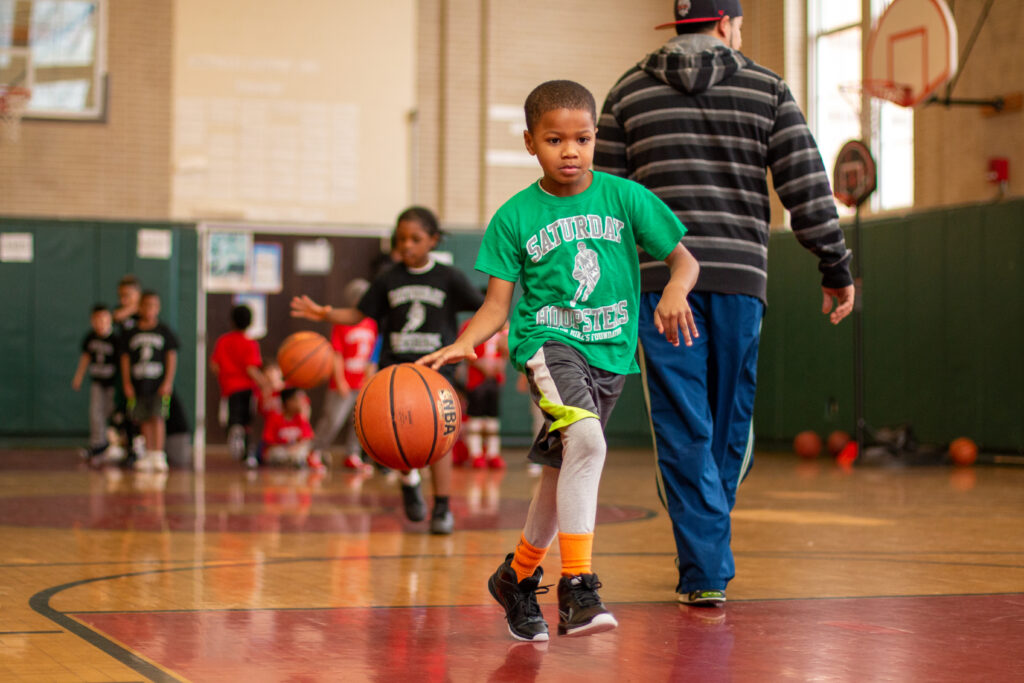
Youth Fitness Across Hartford
Aside from the physical environment and community behaviors, Hartford Public Schools Superintendent Dr. Leslie Torres-Rodriguez emphasized that schools play an important part in students’ health.
“I think our role is multidimensional: one is educating our students, the other is providing access to those opportunities and working in partnership with our families,” she said, referring to the districts’ extracurricular offerings and other resources, such as school clinics and food pantries.
In Hartford Public Schools, elementary students have recess daily, while physical education classes in middle school and high school are typically once to twice a week. High school students, specifically, take a full-year course that is divided into PE classes for one-half of the year and health classes for the other half. Gallagher—who has worked as a Hartford Public Schools PE teacher for 17 years—said it’s not enough.
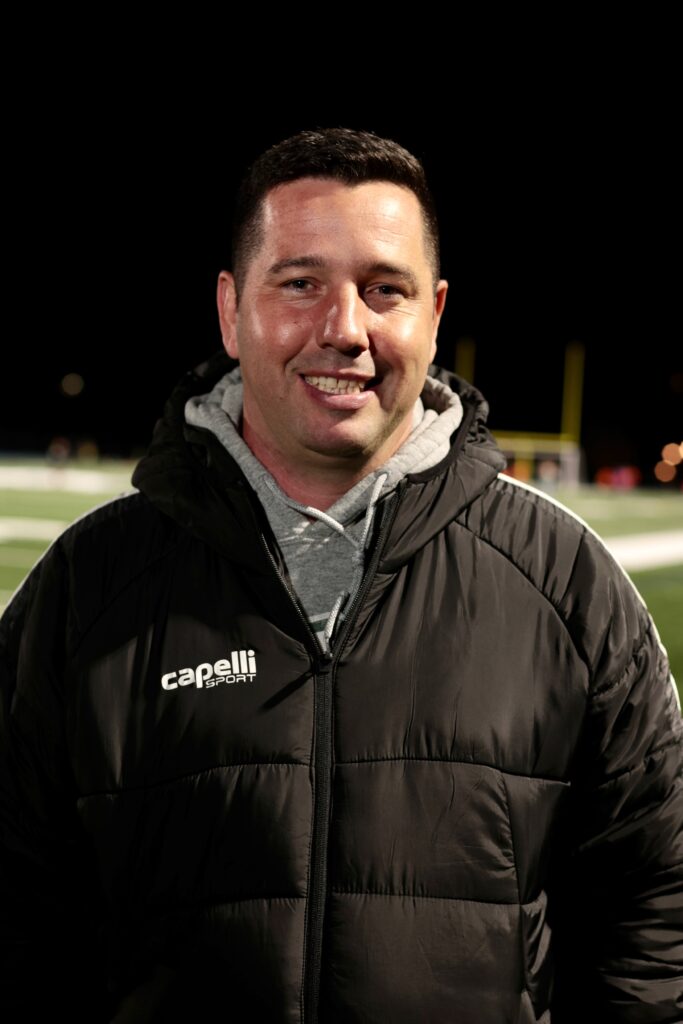
“We’re sitting down at school all day, then a lot of kids go home, and they play video games, sit in front of the TV, or they’re not allowed to go outside,” he said. “I think we’re at 5,000 [kids registered]…but there’s 20,000 school-aged kids in the city of Hartford. What are the rest of those kids doing? Not saying that everybody has to play sports, there’s other ways to get physically active, but we need to get kids outside way more.”
Over the years, the district has expanded its extracurricular and athletic offerings—particularly across its high schools and middle schools—Torres-Rodriguez said. She shared that when she first joined the district about nine years ago, the Hartford community had concerns that some schools across the district had more opportunities than others.
“These are things that in well-resourced communities are not anything that anyone has to sell for because they’re a given, and so that’s what we aimed to do,” she explained. “In partnership with our Board of Education, we had to change our budgeting formula so that our schools could get additional resources to provide these opportunities, toward that goal of meeting the needs of the whole student.”
Although there are costs associated with school sports programs, Torres-Rodriguez explained that the district is committed to removing barriers that could prevent students from participating in activities.
“There is not a student in Hartford Public Schools that is going to be kept off a field because they don’t have the funds for their sneakers or something like that—absolutely not,” Torres-Rodriguez said.
During the fall and winter, Hartford Public Schools offer a range of organized sports including soccer, volleyball, cross country, cheerleading, football, basketball, and swimming. The City of Hartford also offers similar programs—all free—with a few more additions like Zumba, double dutch, water aerobics, a dance group, and a self-defense class this winter. However, families may face transportation and scheduling issues as these programs are offered at particular times and locations. Along with that, children and youth across Hartford have a wide range of interests and more common athletic activities may not seem appealing to young residents.
“It’s about getting kids access to different programs,” Gallagher said. “I want to find a variety of programs so that kids can find something that they can connect with. Not every kid wants to play soccer, not every kid wants to play basketball.”
Active City intentionally offers a wide variety of free activities so local students can explore these opportunities and find what suits them the most, Gallagher explained. Aside from soccer and basketball, the nonprofit also offers fitness programs like a noncompetitive running club, fencing, golf—including a Latina league—double dutch, martial arts, and a drumline and dance program.

Addressing Financial, Scheduling, and Transportation Barriers
All programs under the Hartford Youth Sports Collaborative are free. However, some of the programs have different levels that can offer more competitive experiences for children and youth who are interested. For example, the Hartford Soccer Club has a free recreational league then a travel league and a premier league that vary in cost.
Gallagher emphasized that the nonprofit and its partners are ready to cover financial costs that may prevent a young interested resident from participating at a more competitive level.
“That being said, we don’t turn kids away for financial reasons. Travel soccer is $100 a season, we have parents that pay $15 or $20 or whatever [they can],” Gallagher said. “Most of the programs we partner with do the same thing. A lot of them do fundraisers…bake sales, that kind of stuff to cover the costs because a lot of them are in the same boat. It costs too much to do some of these programs for a lot of these kids.”
Gallagher shared that Active City is intentional about which schools they partner with and which parks they use so that similar programs are spread out evenly across the community.
“We try to move programs around so they are accessible,” he explained. “One of the other big hurdles for a lot of families in Hartford is transportation…so, we try to bring the programs to them. We think about having programs in every neighborhood so that parents can walk to it.”
The nonprofit also offers programs at different times—some on the weekends, others during the week—to have a few different options that may be convenient for families’ schedules.
“We try as much as possible to break down as many barriers as we can. It’s just, I wish we had more programs for kids. We’re trying to work with the schools more to have some programs [be right] after school,” Gallagher said, as many Active City programs begin around 5:30 p.m.
Since Active City relies on its partnerships with local schools, the city, and community members to run its programs, the coalition looks to acquire further financial and volunteer support so it can expand its operations and serve more children across the capital, according to Gallagher.
The nonprofit has been able to allocate enough assistance through community collaboration to run its current year-round programs including a two-week summer camp this past year, but there are still challenges when it comes to acquiring and sharing such resources.
“Most people who run sports programs were at least once an athlete and we’re very competitive people so it’s definitely tough getting people to work together,” Gallagher explained. “There are still programs that don’t want to work with us, that don’t want to be part of what we do…but at the end of the day, I think working together, we can serve more people. I have resources that can help other people and some other people might have resources that can help me so why not try to work together.”
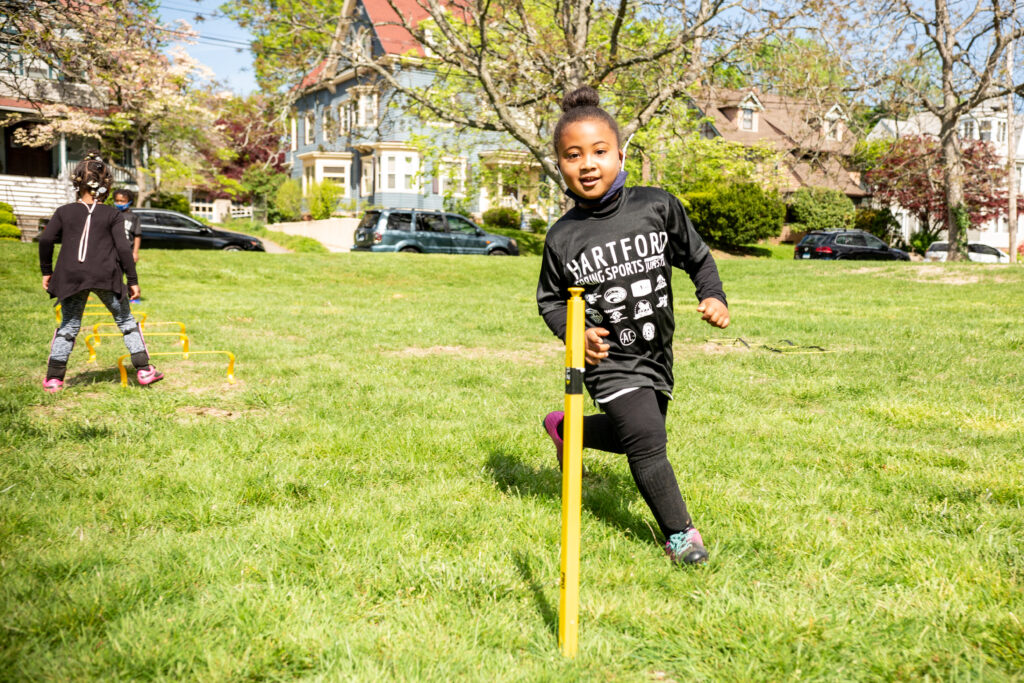
Hartford Children’s Health: Equitable Access in an ongoing series. Upcoming stories will dive into community resources that address food insecurity and examine children’s nutrition and environmental eduction within Hartford.
Belén Dumont reported this story while participating in the USC Annenberg Center for Health Journalism’s 2023 National Fellowship.

